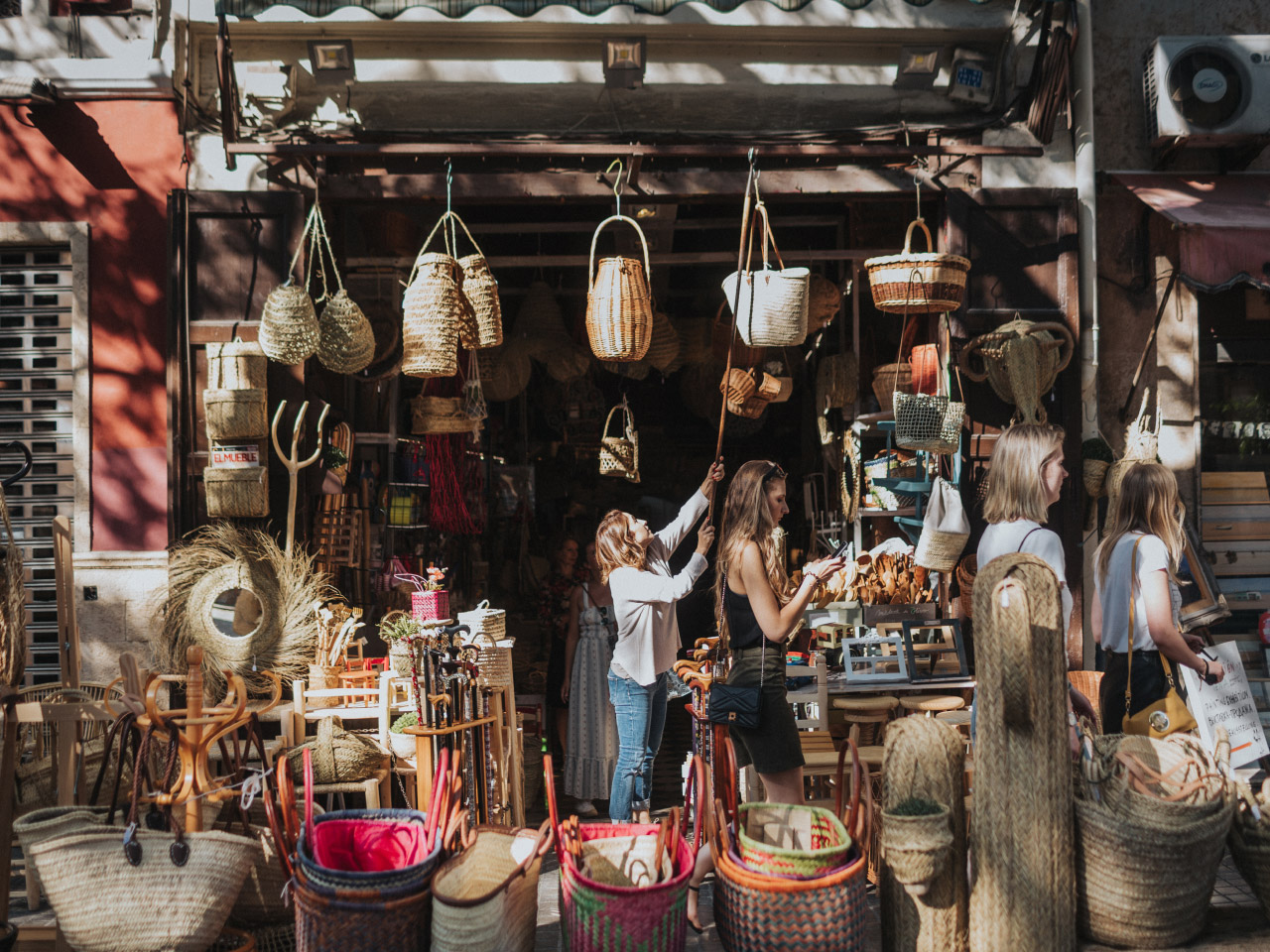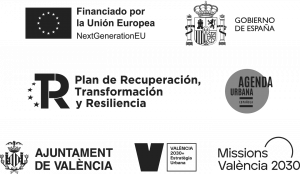València 2030 Urban Strategy was developed in five consecutive phases (Diagnosis, Strategic Framework, Action Plan and Governance, Monitoring and Evaluation Indicator System) in which, and through a process of open and shared participation, different Councillorships of the City Council, different relevant agents of the city and the general public actively contributed.
Thus, it has become a joint collaboration between the public, private, academic and citizen sectors.

Initial diagnosis
The first phase, the initial diagnosis, is based on a comprehensive analysis of the city’s sectoral strategies, linking the established challenges with the objectives set out in the Spanish Urban Agenda.
Two additional strategic objectives have been identified for a more comprehensive view of the challenges we face.

Land-use planning and landscape protection
Dynamization and diversification of the local economy
Urban compactness and endowment
Access to housing
Climate change and resilience
Digital innovation
Sustainable resource management and circular economy

Management and governance
Proximity and sustainable mobility

Health and well-being
Social cohesion and equity

Culture and education
Strategic Framework
The second phase, the Strategic Framework, pinpoints the Urban Agenda in València and aligns it with the innovation policies promoted by the European Union, complemented by the six different looks for rethinking the city.
LE1.
Climate resilience,
territory and
renaturalisation
of the city
1. Territorial integration of the city through green and blue infrastructure at the metropolitan level.
2. Adaptation to climate change
3. Reducing air pollution
4. Moving towards a circular model of production and consumption
5. Improving the quality of the water and of our beaches.
LE2.
JUST AN
INCLUSIVE ENERGY
TRANSITION
6. Increasing renewable energy production
7. Changing the energy culture: increasing self-consumption, responsible energy consumption and energy efficiency in buildings.
8. Right to energy
9. Accelerating the decarbonisation of mobility.
LE3.
SUSTAINABLE, INCLUSIVE
AND EFFICIENT URBAN AND
METROPOLITAN MOBILITY
10. Consolidating a non-polluting model based on active mobility and the use of public transport.
11. Promoting safe and autonomous mobility for all ages.
12. Improving connectivity at metropolitan level.
13. Increasing the efficiency of the logistics system
14. Boosting strategic infrastructures
LE4.
SUSTAINABLE
AND LOCAL FOOD
15. Promoting the agro-ecological transition and revitalising the agricultural system of the city of València in order to strengthen local trade.
16. Strengthening the physical, ecological and cultural links between the “Huerta” and the city .
17. Guaranteeing the right to sustainable and healthy food.
LE5.
INCLUSIVE AND
PROXIMITY CITY
18. Achieving a territorial balance in the distribution of the city's public facilities.
19. Improving the provision of green public spaces in the neighbourhoods to encourage renaturalisation.
20. Consolidating urban pluricentrality in a 15-minute city model.
LE6.
URBAN REGENERATION
BASED ON SOCIAL
COHESION AND
ACCESSIBILITY
21. Developing a model of urban regeneration without gentrification.
22. Achieving València's status as a fully accessible and inclusive city for all people.
LE7.
ACCESSIBLE
HOUSING
23. Ensuring access to affordable and quality housing stock.
24. Increasing the quality of the built housing stock.
25. Encouraging the sustainable use of the city's vacant dwellings
LE8.
ASSOCIATIVE FABRIC AND
INTERGENERATIONAL AND
INTERCULTURAL CITIZEN
NETWORKS
26. Strengthen the associative fabric and citizen and community networks.
LE9.
WELL-BEING,
EDUCATION AND
HEALTH AT ALL
STAGES OF LIFE
27. Strengthening and increasing the resilience of the social care system for vulnerable people.
28. Reducing gaps in socio-economic determinants of health.
29. Promoting healthy behaviours
30. Developing València as an educating city
31. Increasing access to early childhood education
32. Guaranteeing dignified and active ageing
33. Reducing gender inequalities in a cross-cutting manner in the city
LE10.
INCLUSIVE AND
SUSTAINABLE
ECONOMIC
DEVELOPMENT
34. Developing new clusters of economic activity based on innovation, knowledge and the environment.
35. Increasing the employment rates of women and the integration of young people and migrants into the labour market.
36. Digitalising the economy with the aim of reducing the risk of social, economic and gender exclusion caused by the digital transformation.
37. Promoting entrepreneurship, self-employment and the consolidation of existing businesses in the city.
LE11.
INNOVATION,
CULTURE AND
SUSTAINABLE
TOURISM
38. Integrating R&D&I within the economic, social and environmental sectors.
39. Consolidating València as a pole of culture, design and innovation.
40. Dynamizing and increasing the resilience of the cultural and festive sectors
41. Promoting, maintaining and strengthening the "Fallas of Valencia".
42. Making progress in the permanent improvement of the tourist destination in terms of sustainability and intelligence.
43. Innovation and creation of value in the design of the tourism offer.
44. Consolidating València`s brand in relation to innovation, culture and sustainable tourism.
LE12.
URBAN AND
METROPOLITAN
GOVERNANCE
45. Strengthening local administration as an instrument to deliver public policies that put people at the centre.
46. Enhancing open government, transparency and participation in the elaboration and implementation of public policies.
47. Developing a metropolitan governance model
48. Enhancing digitisation, modernisation and coordination for efficient local government.
Action Plan
The third phase, the Urban Agenda`s Action Plan, has a double vision. On the one hand, it identifies innovative projects to respond to the defined strategic lines. On the other hand, it involves all the agents and representatives of the citizens involved in urban innovation in order to broaden the dissemination and consolidate a governance model that will provide a comprehensive vision to address the development process of the city.
Governance Model
In the fourth phase of the València 2030 Urban Strategy, a governance model was designed to define the spaces and tools that will be used to make the Strategy accountable to the outside world.
Monitoring and
Evaluation Indicator System
This last phase of the València 2030 Urban Strategy focuses on the construction of a system of a system of indicators to measure the degree of effective implementation of the Strategy, and therefore of the SDGs, and its contribution and impact on the sustainable development of the city.




